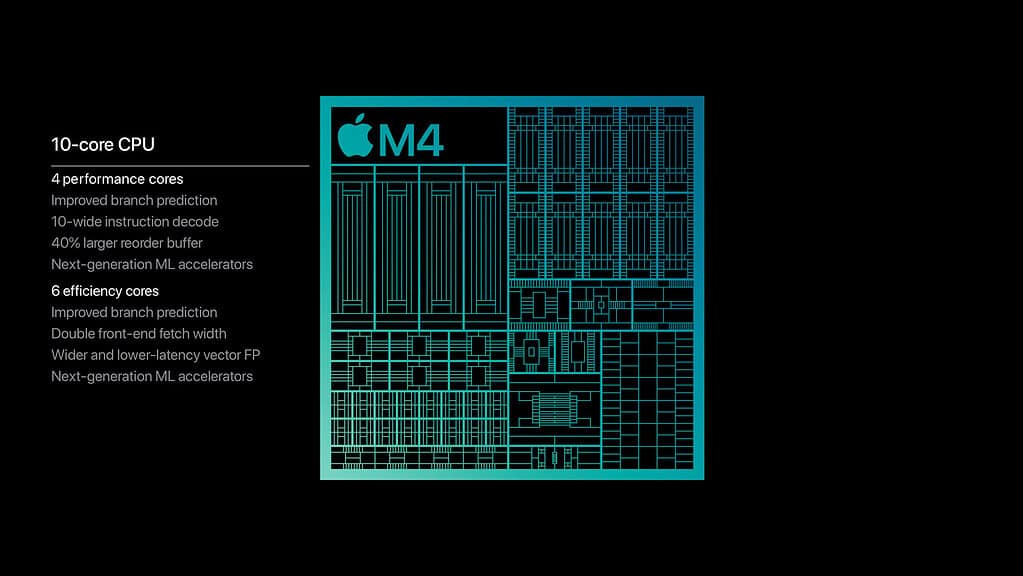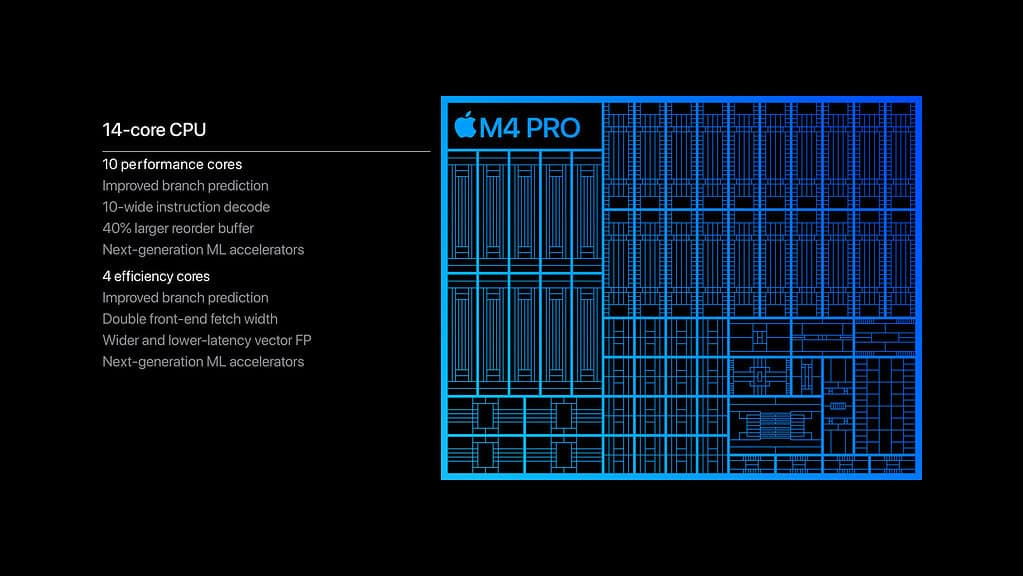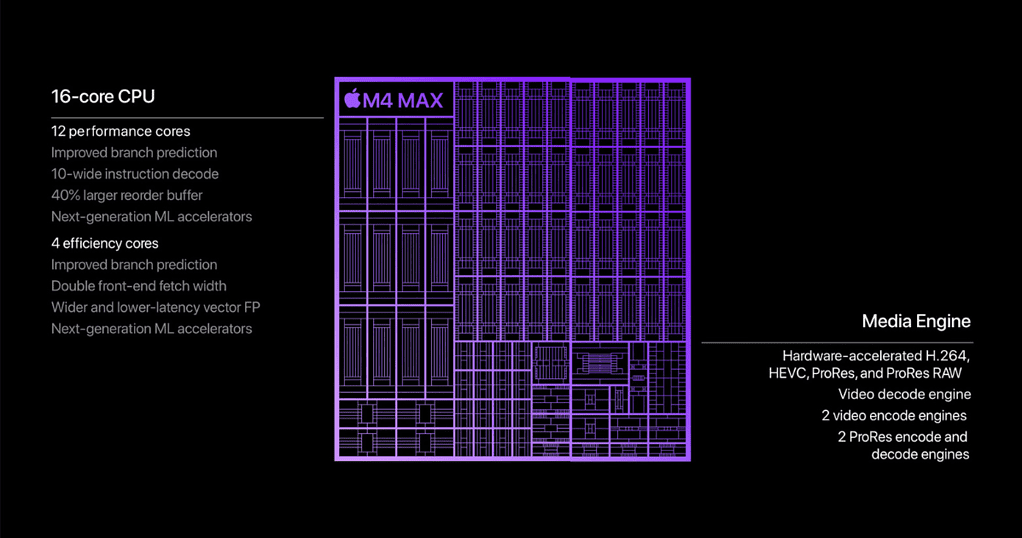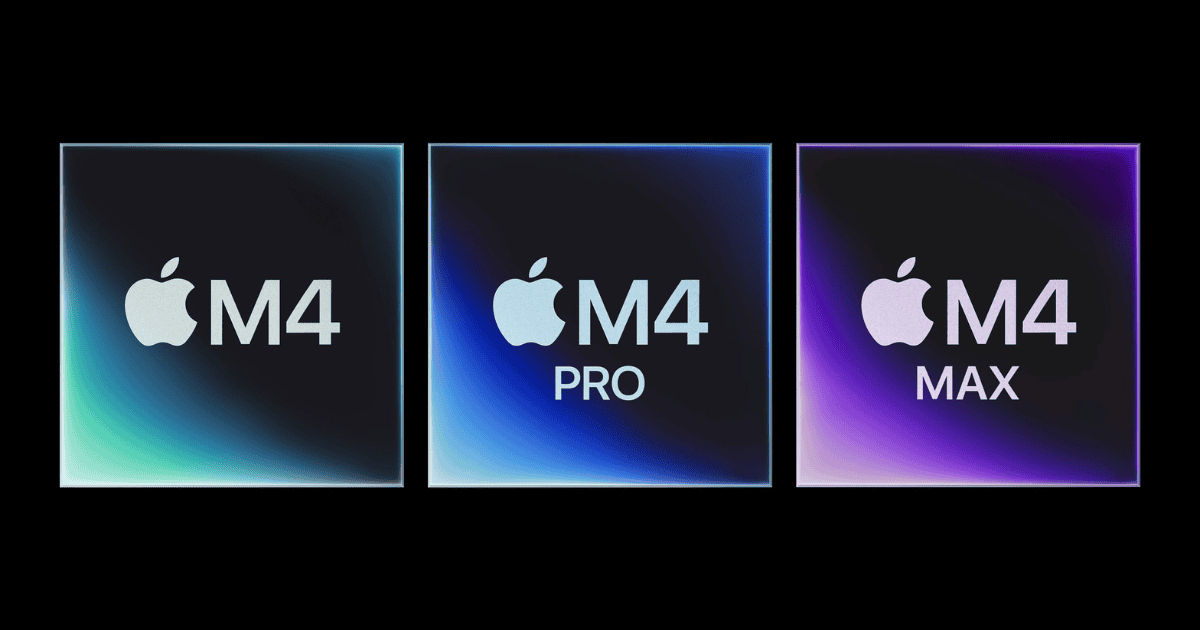Apple has announced its latest lineup of chips for the new MacBook Pro: the M4, M4 Pro, and M4 Max. These new processors offer substantial performance improvements over their predecessors and introduce new capabilities, particularly in AI. Here’s a breakdown to help you choose between the three options:
MacBook Pro M4

The base M4 chip is designed for everyday users, students, and entrepreneurs:
- Up to 10-core CPU (4 performance, 6 efficiency)
- 10-core GPU
- Up to 32GB unified memory
- 120GB/s memory bandwidth
- Support for two external displays
- Up to four Thunderbolt 4 ports
The M4 offers up to 1.8x faster performance, so almost double, than the M1 chip.
But first, what are these cores?
In modern chip designs, CPUs often have multiple cores to handle different tasks efficiently. When Apple refers to an “x-core CPU,” they’re indicating the total number of processing cores in the chip. For example:
- M4 has up to 10-core CPU
- M4 Pro has up to 14-core CPU
- M4 Max has up to 16-core CPU
The higher the number of cores, the more tasks the CPU can handle simultaneously, leading to better performance.
Performance cores
Performance cores, also known as high-performance cores or “P-cores,” are designed to handle demanding tasks that require significant processing power. These cores typically:
- Run at higher clock speeds
- Consume more power
- Are optimized for single-threaded performance
- Handle complex calculations and intensive workloads
For example, the M4 Max has up to 12 performance cores, which contribute to its ability to be “up to 2.2x faster than the CPU in M1 Max.”
Efficiency Cores
Efficiency cores, also called high-efficiency cores or “E-cores,” are designed to handle less demanding background tasks and improve power efficiency. These cores:
- Run at lower clock speeds
- Consume less power
- Are optimized for energy efficiency
- Handle lighter workloads and background tasks
For instance, the M4 chip has “up to six efficiency cores.”
Now, back to the topic.
MacBook Pro M4 Pro

The M4 Pro is made for more demanding workflows:
- Up to 14-core CPU (10 performance, 4 efficiency)
- Up to 20-core GPU
- Up to 64GB unified memory
- 273GB/s memory bandwidth
- Thunderbolt 5 support (up to 120Gb/s data transfer)
This chip provides up to 1.9x faster CPU performance than the M1 Pro and is well-suited for developers, engineers, and creative professionals.
MacBook Pro M4 Max

The M4 Max is the top-tier option for the most demanding users:
- Up to 16-core CPU (12 performance, 4 efficiency)
- Up to 40-core GPU
- Up to 128GB unified memory
- Up to 546GB/s memory bandwidth
- Enhanced Media Engine with dual video encode engines and ProRes accelerators
- Thunderbolt 5 support
The M4 Max offers up to 2.2x faster CPU performance than the M1 Max, making it ideal for data scientists, 3D artists, and video professionals working with large datasets or complex rendering tasks[1].
Key things to consider
- If you work with large files or multiple applications simultaneously, consider the higher memory options of the Pro and Max variants.
- For graphics-heavy work or gaming, the increased GPU cores in the Pro and Max models may be beneficial.
- If you require the fastest data transfer speeds, the Thunderbolt 5 support on the Pro and Max models might be crucial.
- Balance your performance needs with your budget, as higher-tier chips will likely come at a premium price.
More here.
